On Friday January 17 2020 Puerto Rico was witness to yet another extreme event. Just north of the island a small asteroid created a bright fireball in the sky. Due to its brightness it was visible from a large part of the island and many reported to also hear a loud boom. The event occurred around 4:30 pm EST (21:30 UTC) in the afternoon which allowed many to witness this nice daytime fireball.
AMS/IMO counted 31 witness reports so far with the most distant report coming from Cruz Bay. If you have also seen this fireball, please let us know about it! Click here
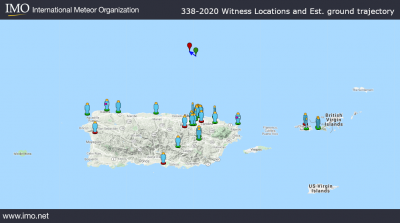
The fireball was visible for only a couple of seconds but some videos of it were taken accidentally.
It was even bright enough to be caught by the NOAA weather satellites (Source TheWeatherChannel). With this data a location can be estimated: 19.5°, -66.0°.
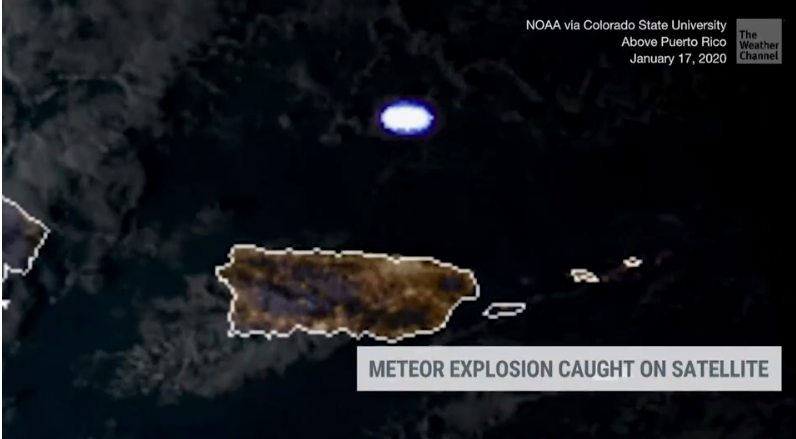
The object had such a high energy that the pressure change that its path through the atmosphere caused could be measured by infrasound stations. From the closest stations of the International Monitoring System of the Comprehensive Nuclear-Test-Ban Treaty Organisation three stations recorded a very strong signal.
We were able to calculate a source energy of about 45 t TNT. With an assumed velocity of 14 km/s and a density of 3000 kg/m^3 the size would be 1.1 m diameter, which places the entering object just above the asteroid threshold.
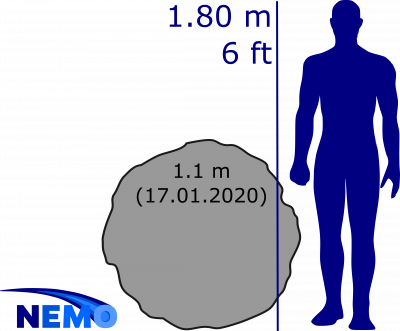
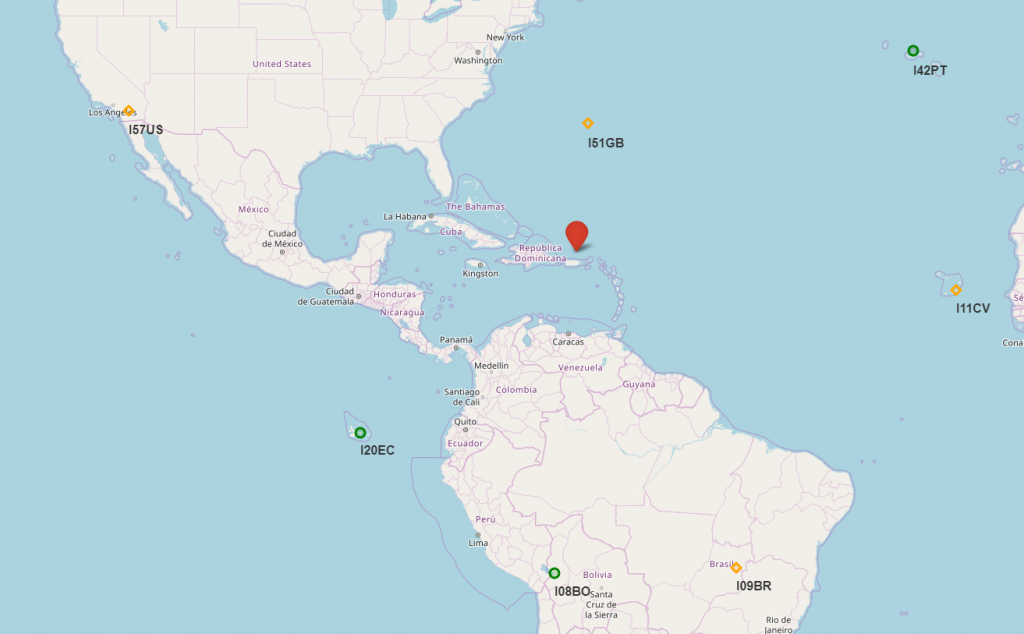
The fireball was also detected with US government sensors. They published an entry time of 21:29:49 UT, coordinates of 19.4° N, 66.0° W, a velocity of 15.5 km/s, and an energy of the entering object of 0.29 kt TNT.
Some of the fireball remnants were probably detected by the Atmosphere-Space Interactions Monitor Modular X- and Gamma-Ray Sensor (MXGS) which collects data for a climate observatory for the ISS. The traces were found at about 22:45 UTC south of Puerto Rico.
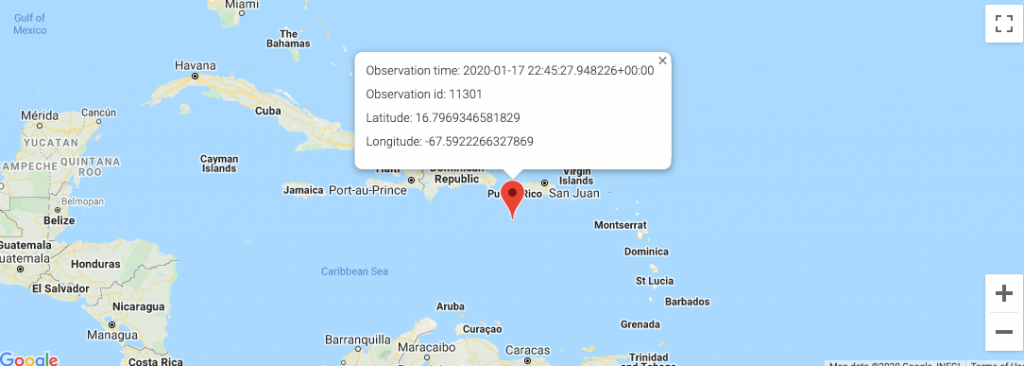




 You saw something bright and fast? Like a huge shooting star? Report it: it may be a fireball.
You saw something bright and fast? Like a huge shooting star? Report it: it may be a fireball.  You counted meteors last night? Share your results with us!
You counted meteors last night? Share your results with us!  You took a photo of a meteor or fireball? You have a screenshot of your cam? Share it with us!
You took a photo of a meteor or fireball? You have a screenshot of your cam? Share it with us!  You caught a meteor or fireball on video? Share your video with us!
You caught a meteor or fireball on video? Share your video with us!